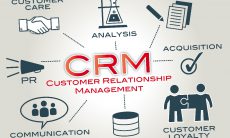Part of the uncertainty of the role of the IT group stems from two complementary, but fundamentally different uses for IT, which I will call Necessary IT and Differentiating IT. Investments that must be made to keep the business running, to lower risk, or to raise productivity and lower costs are Necessary IT. Differentiating IT, in contrast, drives competitive advantage, new markets, and improved revenue. Does your company know the difference?
Too often, all IT projects are lumped together and people try to apply “best practices” across both kinds of projects indiscriminately. The result is that success in either tends to be sporadic, driving down the overall value of IT to the organization, and raising risks and lowering credibility in the minds of senior management.
One reason the line between these two types of IT is blurred is that every successful differentiating technology eventually becomes a necessity. For example, in the 1980s, Citibank emphasized ubiquitous, simple Automated Teller Machines to drive higher customer satisfaction and lower costs. This initially differentiated Citibank against its competition, but as customers began to demand this service from all banks, the same technology became a necessity. Federal Express package tracking is a similar story—what started as a FedEx exclusive quickly became the cost of doing business for UPS, Airborne, and everyone else. This pattern seems to recur fairly frequently across many different technologies and industries. The first mover (or first few movers) employ a differentiating technology, while the mainstream and laggard companies later scramble to employ the very same technology as a competitive necessity.
Another reason for the blurry line is that the Chief Information Officer (CIO) has typically managed both. This can be very challenging, because Necessary IT focuses on reliability and lowering costs while the differentiation plays are about competitive differentiation and, eventually, incremental revenue. Few parts of any business are simultaneously focused on operational and strategic goals to this degree. Every business unit has plans for the future, but they usually involve doing their main mission better. IT has two main missions with two different sets of goals and timeframes for success.
The problem with blurring these lines is that the best practices for each kind of investment are often different. One key difference is that new technologies that can emerge as differentiators typically emerge as integrated solutions. Citibank worked with technology vendors to create custom hardware and software for its ATMs, because that was the only way to solve the problem. FedEx implemented highly customized tracking systems, even handing out PCs to their largest customers so they could access a private network. It would not have been possible to solve these problems when they did except by employing highly integrated and customized technology. These intgrated systems were tested carefully with users and modified until they succeeded. There were no best practices for either of these applications because they did not exist. Tight integration coupled with relentless user testing revealed the best practices required for the business breakthrough.
Necessity spending is quite different. Necessities must be implemented in a standard way. Best practices already exist and standards exist for how to implement the technology—tech vendors may even have arrayed themselves into various niches that each plug into the standard implementation in a well-defined way. As ATM technology matured, for example, vendors emerged that used PC hardware with standard operating systems and industry data networks to drive down costs with the same user satisfaction that originally demanded integrated systems. Package tracking was made ubiquitous through Web interfaces that obviated the need for private software and networks.
Because the two kinds of IT are so different, they require different measurements. Necessary IT can often be justified on the basis of cost savings while Differentiating IT usually has a revenue justification. Differentiating IT typically requires more innovation in your business justification as well. How did FedEx justify package tracking? Maybe they thought they’d reduce phone call inquiries (reducing costs) but they actually created a feature that caused customers of other delivery services to switch.
Many companies are using the Chief Technology Officer (CTO) to handle the differentiation mission of IT. The CIO handles the necessity spending while the CTO takes the rest. To do this job well, the CTO needs to have a much closer relationship with senior management, especially as it involves corporate strategy, than other IT managers. The CTO must deeply understand corporate strategy to help technology meet that strategy, but the CTO is also responsible for influencing corporate strategy based on technology trends and capabilities.
When you examine success stories such as Citibank and FedEx using differentiating technology as a competitive weapon, the more optimistic among us want to run out and start several big Differentiating IT projects. But the truth about these projects is sobering. While IT undoubtedly has the power to differentiate, as these successes show, IT is a two-edged sword. For every successful differentiation project, there are probably hundreds that fail. Each one that fails puts a financial drag on the corporation that reduces or even eliminates the benefits of the successful Differentiating IT projects.
How do you use metrics to limit failure and accentuate success? Most successful CTOs follow similar paths:
- Select projects carefully. Study the risk and business value up front to pick the winners.
- Implement small projects quickly.
The bigger the project, the bigger the investment, and hence the more money at risk. Keeping projects short and cheap allows you to test the riskiest factors first.
- Monitor constantly. Here’s where your metrics are critical. What are you testing for? Customers switching from the competition? More revenue from existing customers? Know what you want to learn and design your metrics to learn it fast.
- Act on your results. This might be the trickiest part of the project. You must be willing to quickly double down your bet by expanding what works. Or ruthlessly kill what does not. Too often, successful pilots are left slowly running along and take years to become game changers. Even more frequently, someone’s pet idea continues being tested long after it is clear that it isn’t working.
Does your business distinguish between Necessary IT and Differentiating IT? If not, you may wake up to find out that you are doing only one. Or that you are doing both but managing both the same way.







